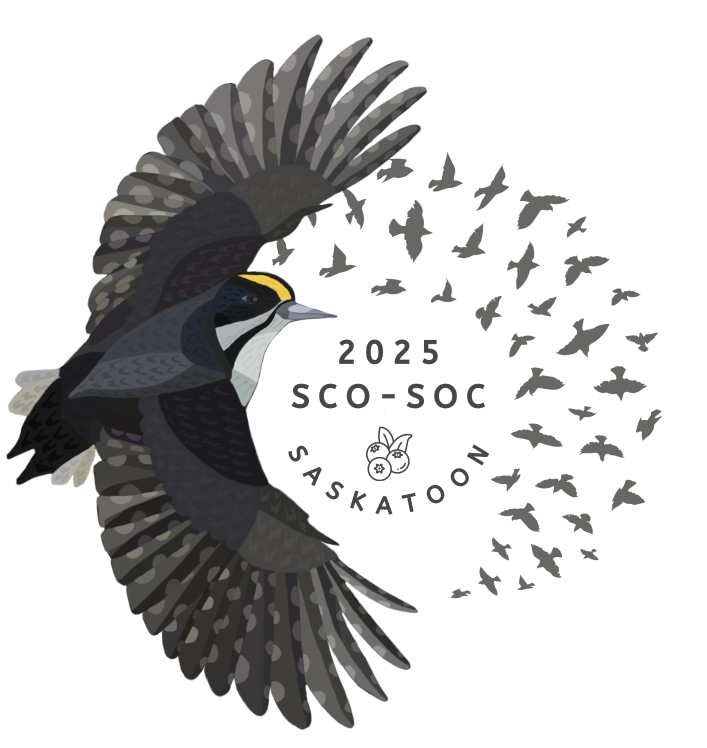Advances in Bioacoustics and Passive Acoustic Monitoring
Chair: Jennifer Foote; Co-chair: Steven Van Wilgenburg
Passive Acoustic Monitoring (PAM) has rapidly become one of the primary methods for collecting data on the occupancy, abundance and distribution of species that use acoustic cues to defend territories. Beyond being a tool for surveying territorial species, it has also become a key approach to monitor nocturnal migration, study behavior, and collect data on the acoustic environment (soundscapes) inhabited by species. Like any rapidly growing field, avian bioacoustics has seen many technological and methodological advances that are improving efficiency, as well as the accuracy and applicability of the data. Our goal is to inspire the next generation of bioacoustic research and promote the application of the most recent advances in data processing and analysis while highlighting potential future directions and challenges for the field.
Cats and urban threats in Canada: an interdisciplinary look at the issues, research, and future directions to address leading causes of direct bird mortality.
Chair: Elizabeth Gow; Co-chair: Jonathan Chu
Urban areas are underrecognized hotspots for bird diversity and abundance. In 2013, papers published in Avian Conservation and Ecology reported that multiple leading measurable causes of bird mortality in Canada, with the top two sources of mortality, outdoor cats and collisions with glass, being most prevalent in urban areas. Outdoor cats have been estimated to kill anywhere between 105-348 million birds annually in Canada. In the decade since these informative papers, interest and research on the impacts of urbanization and outdoor cats has skyrocketed. Challenges surrounding outdoor cats and particularly reducing their impacts on birds, require interdisciplinary thinking. To that end, this symposium will bring together several key parties with diverse perspectives including ornithologists, ecologists and conservation practitioners. Over the course of this symposium, we will describe the current state of urban threats to birds with a focus on outdoor cat challenges by answering why there are no simple solutions, what we currently know about cats in Canada, the complexities of understanding cat population dynamics, and who are the key concerned parties for actionable change. We will also discuss topics related to other threats birds face in urban areas. Furthermore, the symposium will provide novel ecological understanding about cats and future directions by answering how many cats are outdoors, presenting updated estimates of annual bird mortality by cats, discussing what cities and ornithologists can do, and detailing what steps and research are needed from the ornithological community and beyond. If time, we will end the symposium with a panel discussion.
Boreal bird dynamics in the face of environmental change
Chair: Kevin J. Karynal; Co-chair: Elly Knight
The Canadian boreal forest has undergone substantial changes over the last century due to an increased frequency and extent of anthropogenic and natural disturbances. These pressures have resulted in changes to ecosystem resilience and functioning with potentially significant impacts on boreal avifauna. Understanding and mitigating the effects of these ongoing environmental changes is critical for maintaining avian richness and diversity yet limited knowledge of avian population dynamics and responses to disturbances in some regions precludes efforts to implement effective conservation efforts there. In our symposium, a diverse set of speakers will present novel findings on avian population and community dynamics in response to local and landscape change using data from localized studies, large-scale monitoring programs and participatory science databases. Importantly, speakers will outline drivers of future avian population change and summarize key research required to implement effect conservation measures for boreal avifauna.
Threats and Conservation of Grassland Birds in Agricultural Landscapes
Chair: Christy Morrissey; Co-Chair: Nancy Mahony
Grassland birds are experiencing precipitous declines across North America. The causes have been linked to reduction in habitat quantity or quality often associated with agricultural practices that have intensified over the recent decades. Land management practices that lead to loss of native grasslands and conversion to cropland can increase risk of nest loss from tillage and spraying, increase exposure to hazardous pesticides, increase predation pressure, or alter migration or wintering survival. Cutting edge approaches using Motus wildlife tracking, eDNA, bioacoustics and non-lethal pesticide analyses have provided new tools to study the threats. In addition, new ideas and conservation strategies involve working with private landowners to advance novel conservation solutions.
Addressing Aerial insectivore declines - death by a thousand cuts
Chair: Matthew Fuirst
Aerial insectivores are declining more rapidly than any guild of North American birds, with an estimated loss of nearly 160 million individuals since the 1970s. This group of birds is facing ‘death by a thousand cuts’: loss of habitat to human development, decimated insect populations from pesticides, and the devastating impacts of climate change. Over the last 40 years, researchers from university, government and NGOs have been leading aerial insectivore research into causes of declines. Our symposium will bring together researchers and conservationists, along with external collaborators that are studying aerial insectivores. We have speakers whose presentations span various aerial insectivore species (e.g., Tree Swallow, Bank Swallow, Chimney Swift, Eastern Whip-poor-will) and subject areas (e.g., climate change, habitat use, physiology), with a focus on student and early-career presenters, which will ensure a diversity of voices and perspectives and we hope will make for a symposium that is inclusive, representative, and appealing to a broad audience.


